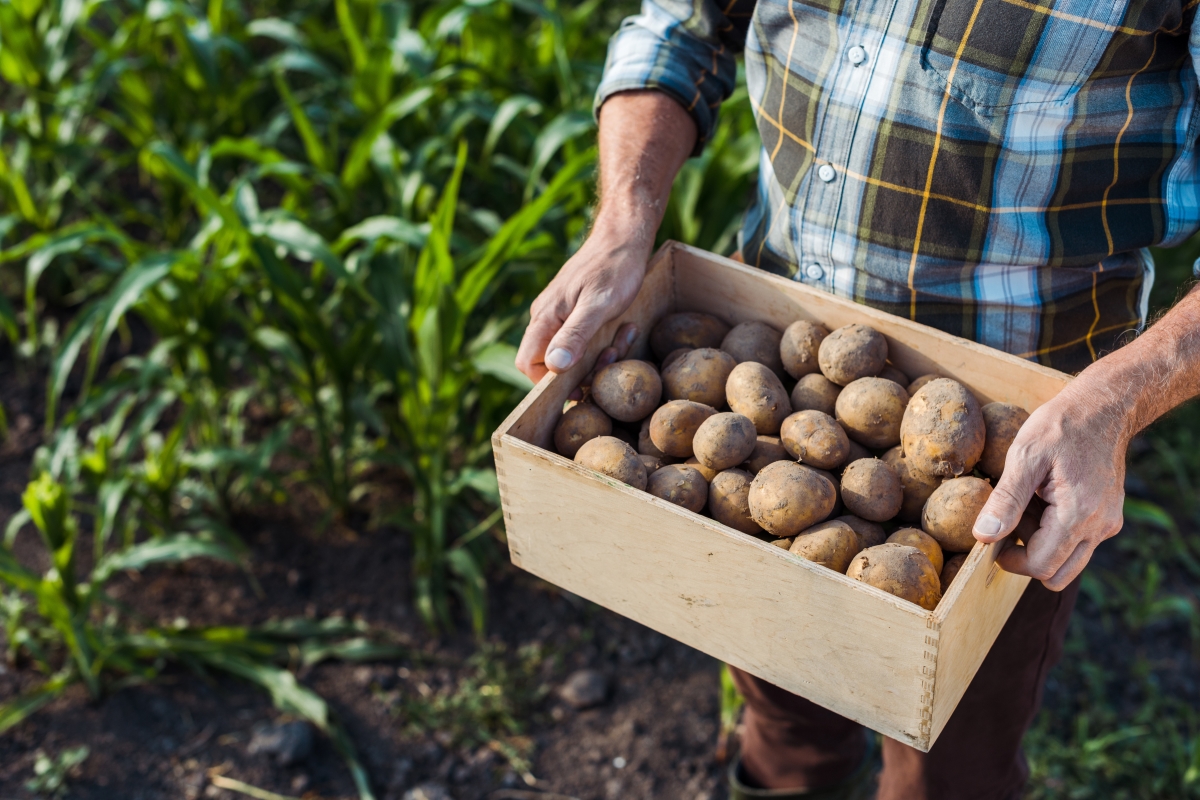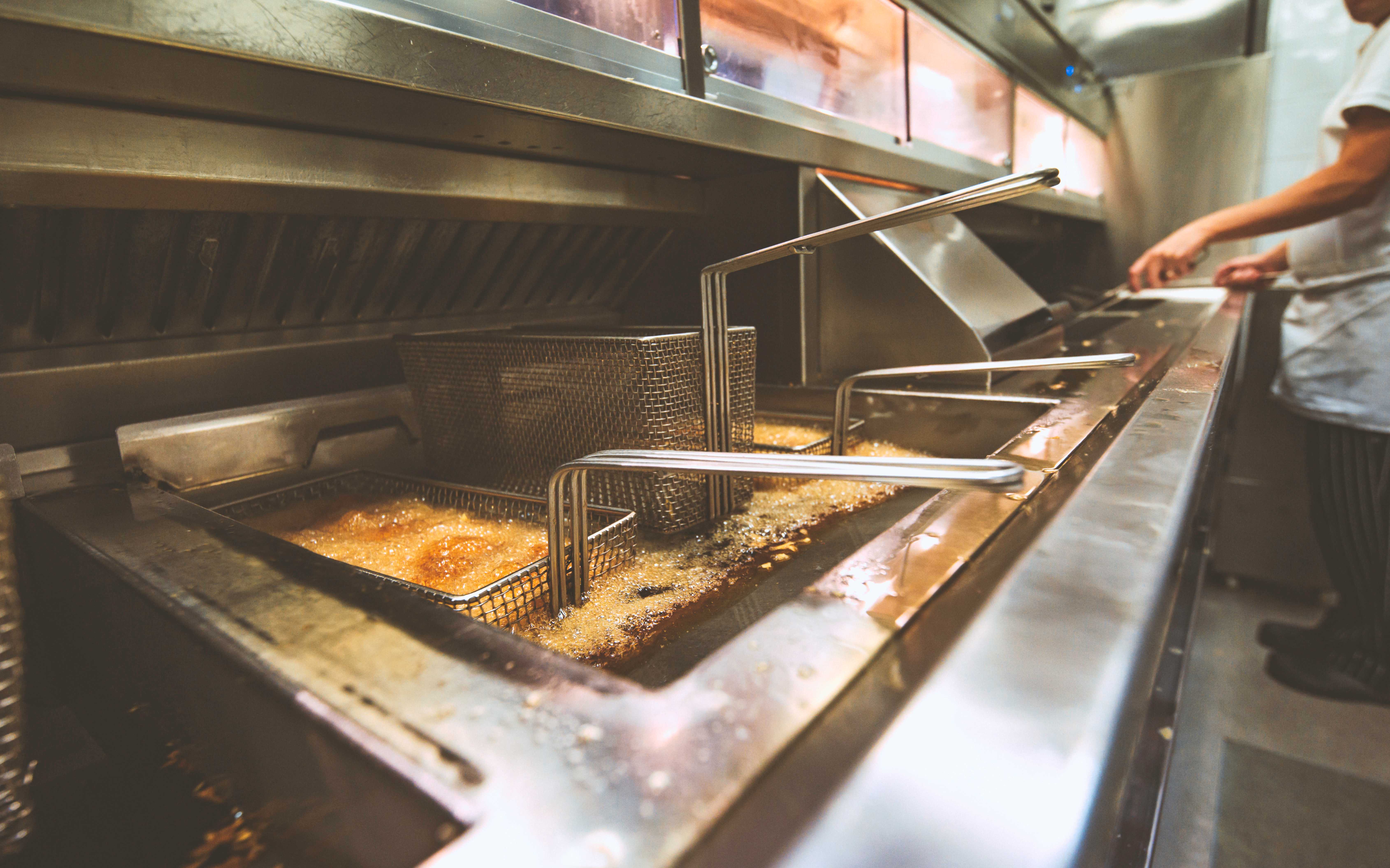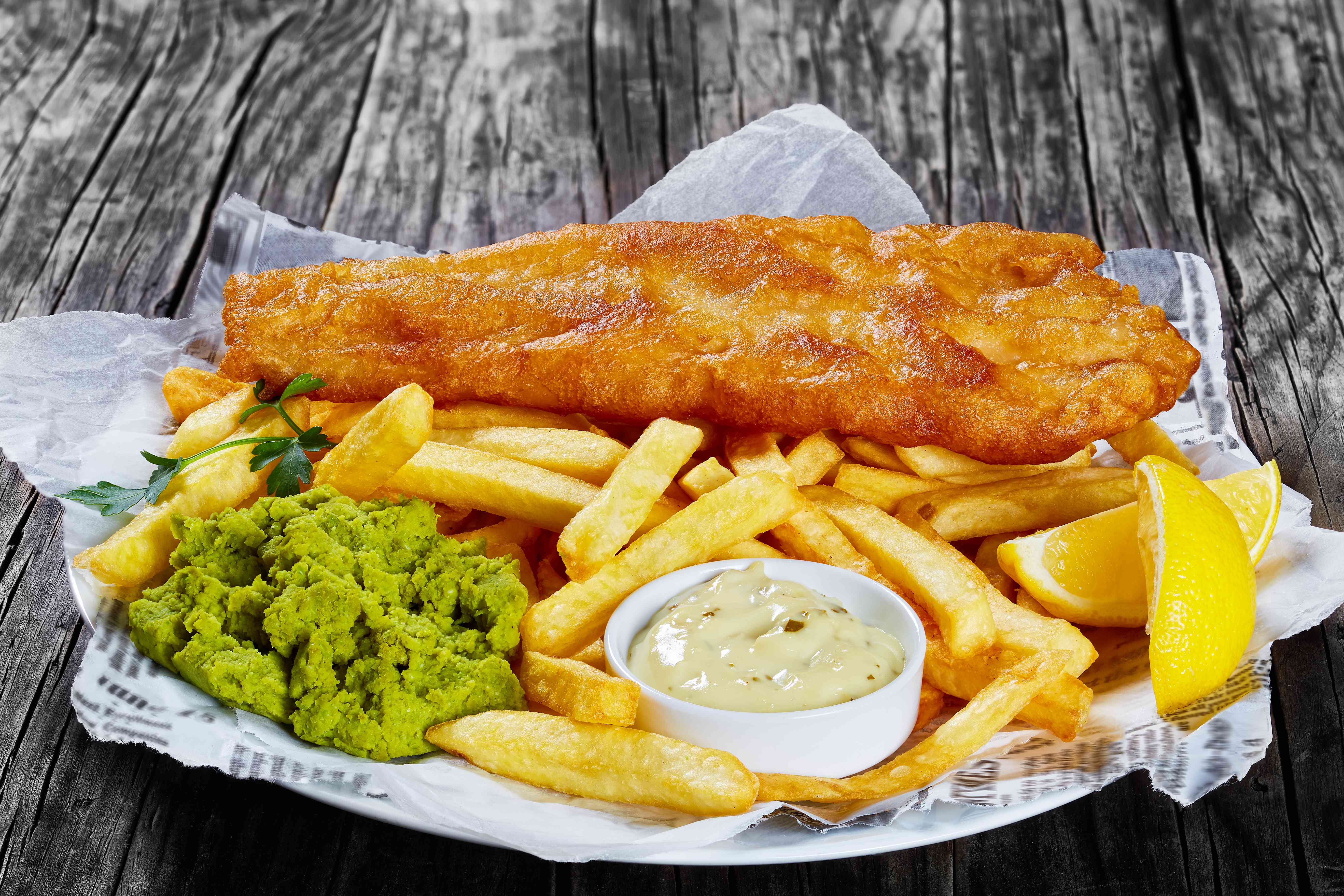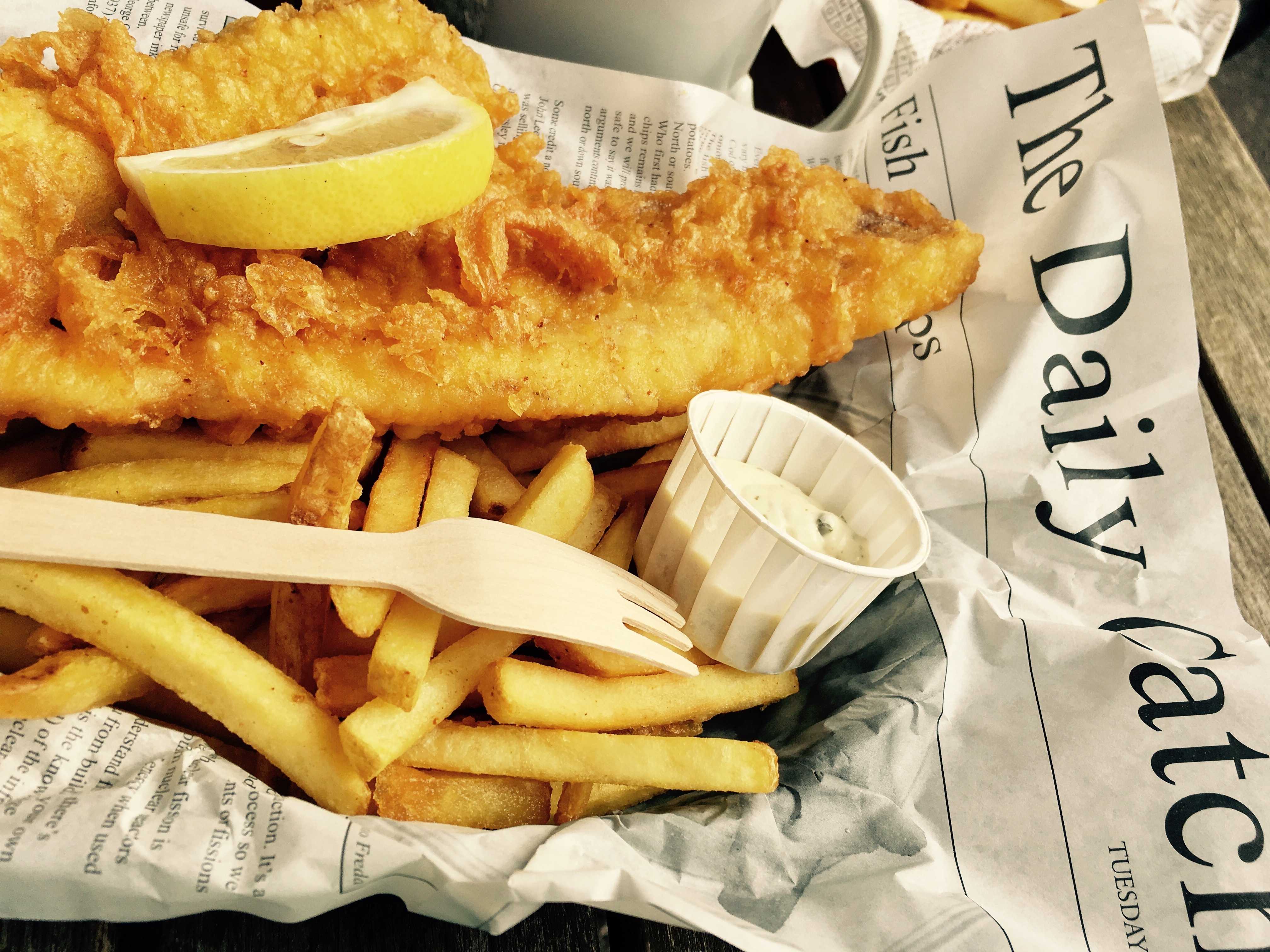Like all vegetables, there’s a point where potatoes are no longer safe to eat. If your spuds are turning green in colour or are sprouting, you’re probably wondering whether you can safely make chips with them or whether it’s better to compost them or throw them out. Here are all the answers.
What makes potatoes turn green?
Originally from South America, there are over 4,000 varieties of potato in the world that vary in colour from red and yellow to blue, purple and white. The species that are most commonly grown in the UK include Maris Piper, New Season Comber Potatoes, Pembrokeshire Earlies, Jersey Royals, and King Edwards.
These are yellow potatoes that have creamy, white flesh. However, when these tubers are taken out of the ground and exposed to light, they start to produce chlorophyll, turning the white flesh slightly green. Planting potatoes at the top of a hill can also make them more likely to develop chlorophyll faster than other potatoes.
Are green potatoes poisonous?
It’s not the chlorophyll itself that you need to worry about. After all, we eat a lot of it in our green, leafy vegetables, and it’s harmless. The real issue is that when potatoes start producing chlorophyll, they also start to develop higher levels of solanine, a toxic glycoalkaloid.
Solanine is produced by the plant as a protective measure, helping to protect exposed potatoes from being eaten by animals by making them taste bitter, and thereby ensuring that the potatoes can sprout into new plants. It’s also found in the stems and leaves of potato plants. This chemical is a neurotoxin, which means it affects the central nervous system, causing nausea and headaches if you eat enough of it.
Because of the bitter taste, it’s very unusual for a person to eat enough green potatoes to make them ill, although eating a big serving of green potato (especially in a child) can cause symptoms such as fever, headache, stomach pain, vomiting, diarrhoea, slow breathing, and a slow pulse. In very severe cases, people can require hospitalisation and even die, but this is very rare.
In most cases of severe solanine poisoning, the patient has been suffering from malnourishment and hasn’t had quick access to medical care. Regardless, it’s better to entirely avoid potatoes that have turned significantly green, especially if you are feeding children.
If your potatoes are light green or have green areas, you can peel potatoes to remove any green flesh and eyes, as this will remove the areas where the solanine is concentrated. This will make the potatoes safe to eat, as the solanine is only found in the top one-eighth of the tuber’s surface.
Frying is also known to destroy solanine, making the potato safe to eat. However, boiling the potato doesn’t do anything to reduce the solanine levels in the potato. Most chippies and restaurants usually don’t use potatoes that have started to turn green in any case, as they tend to have a more bitter taste.
Can you prevent potatoes from turning green?
There are a few different ways to prevent potatoes from going green. You can:
- Buy or grow varieties that are more resistant to developing chlorophyll, such as russet and red-skinned potatoes.
- Store your potatoes in a dark, dry space in a paper bag, cupboard, or pantry to prevent them from being exposed to any sunlight.
- Store an apple with your potatoes, as the ethylene gas an apple will give off prevents sprouting.
- Store potatoes away from onions, as the onions actually encourage the potato to sprout.
- Ensure potatoes don’t become uncovered with soil. The mixture of rain, wind and sunlight in Britains unpredictable weather conditions can expose them to sunlight this way.
Are sprouted potatoes safe to eat?
As long as the potato is firm to the touch, smells fresh and has no soft or dark areas, they’re fine to eat – even if they are sprouting. You can make mash, bakes, and chips with sprouted potatoes safely. However, you should prepare them a little more carefully, as the sprouts can have higher levels of solanine in them.
Can you remove toxicity from sprouted potatoes?
Yes! There’s no need to throw out sprouted potatoes as long as they aren’t too far gone. All you have to do is dig out the eyes where the sprouts appear and peel the potato properly, and they’re ready to cook. If your potatoes are growing a bit too enthusiastically for your liking, you can always plant them in your garden to seed your new crop.
So, what’s the verdict?
A good rule of thumb is that slightly green or sprouted potatoes are safe to eat as long as you remove the sprouts and peel away any green flesh. But if your potato looks a bit too green for your liking, rather use it in your home compost or plant it in your vegetable garden to be on the safe side!
If you’re looking for a stable frying oil that will cook your food in minutes, choose Frymax. Our sustainable, premium-grade palm oil is relied on by chippies across the country to serve up high-quality fried foods. If you’d like to learn more, get in contact with Frymax.






